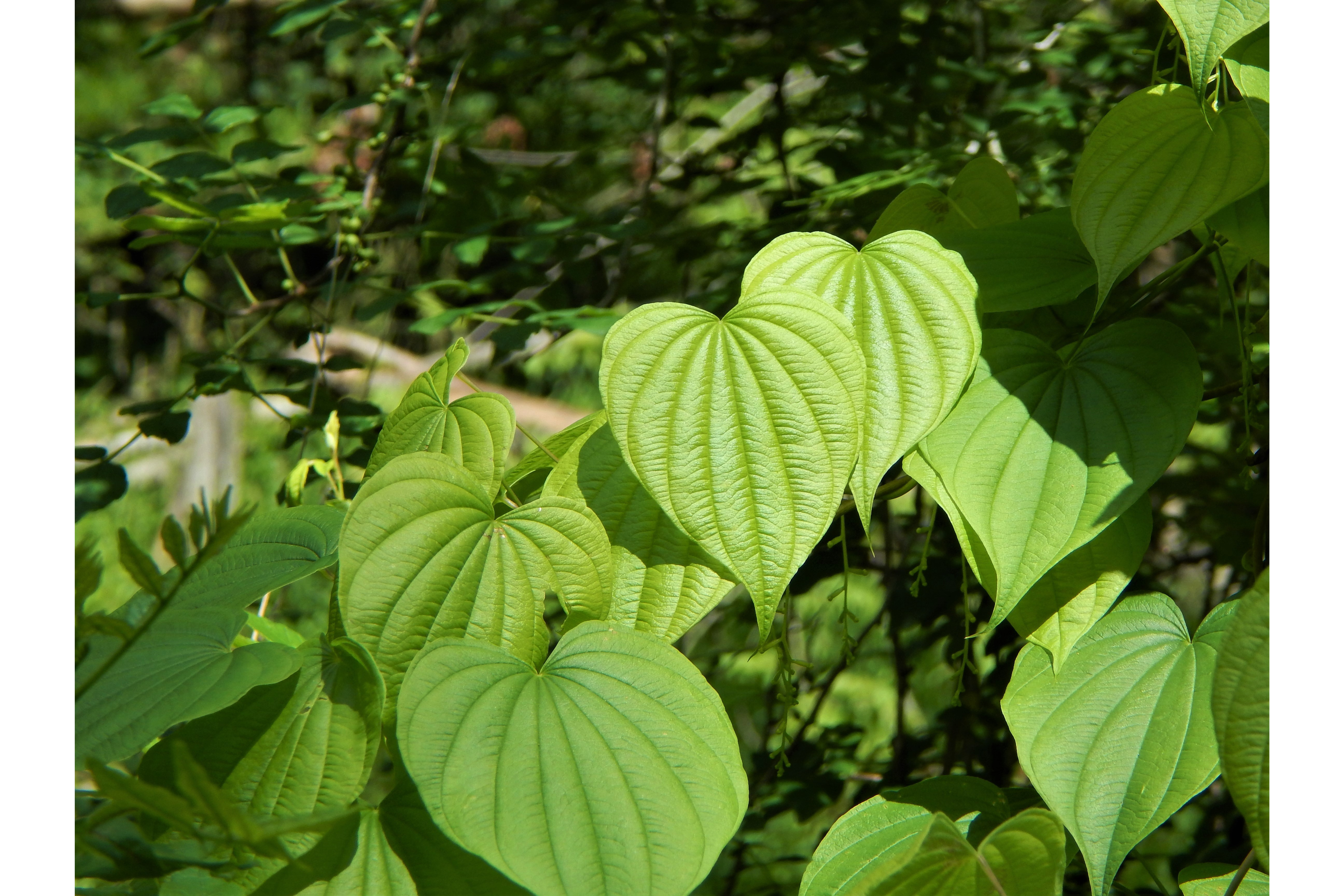Wild Yam
(Dioscorea villosa)

Description
Dioscorea villosa is a species of twining tuberous vine which is native to eastern North America. It is commonly known as wild yam, colic root, rheumatism root, devil's bones, and fourleaf yam. It is common and widespread in a range stretching from Texas and Florida north to Minnesota, Ontario and Massachusetts. Dioscorea villosa flower petal color is commonly known to be green to brown, or white. Lengths of the flower petals range from 0.5 mm to 2 mm. The flowers tend to grow out of the axil; this is the point at which a branch or leaf attaches to the main stem. There is only one flower present on the inflorescence. The fruit of the plant is a capsule that splits and releases the seeds within to then begin the dispersal process. The fruit of Dioscorea villosa ranges in size from 10-30 mm. The flower does not produce aerial bulblets. Some of the English common names of this plant reflect its use in Native American and other traditional medicines. In traditional Russian herbal medicine, saponin extracts from the roots of various varieties of wild yam are thought to be an anticoagulant, antisclerotic, antispasmodic, cholagogue, depurative, diaphoretic, diuretic and a vasodilator. There is little modern clinical research on Dioscorea villosa, and the one study of a wild yam-containing cream for menopausal symptoms failed to find any value from this therapy. According to the American Cancer Society, there is no evidence to support wild yam or diosgenin being either safe or effective in humans.
Taxonomic tree:







